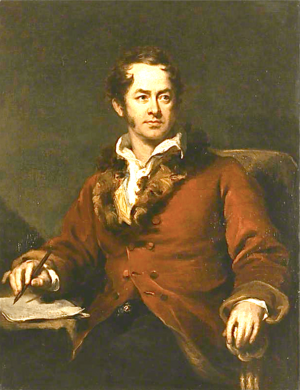John MacCulloch facts for kids
Quick facts for kids
John MacCulloch
|
|
|---|---|

John MacCulloch
|
|
| Born | 6 October 1773 |
| Died | 21 August 1835 (aged 61) |
| Nationality | Scottish |
| Scientific career | |
| Fields | Geologist, Surgeon and Civil Engineer |
John MacCulloch (born October 6, 1773 – died August 21, 1835) was a Scottish geologist. He was the first geologist to work for the British government. MacCulloch is famous for his important books about geology. He also created the first geological maps of Scotland. He even brought the word "malaria" into the English language.
Contents
John MacCulloch's Early Life
John MacCulloch was born on October 6, 1773, in Guernsey. His family came from Scotland. As a boy, he showed great talent. After finishing grammar school, he went to the University of Edinburgh to study medicine. There, he was inspired by a famous chemist named Joseph Black.
Becoming a Doctor and Chemist
MacCulloch became a doctor in 1793. He then joined the army as an assistant surgeon. He worked with the artillery and later became a chemist for the Board of Ordnance in 1803. He also taught at the Royal Military Academy, Woolwich. In 1811, he wrote his first scientific papers. These papers were about the geology of Guernsey and the Channel Islands.
Exploring Scotland's Geology
In 1811, John MacCulloch was chosen to study the geology and minerals in Scotland. He helped identify limestone for making gunpowder. He also looked at Scottish mountains for scientific experiments. During these trips, he learned a lot about Scotland's geology and minerals. He even collected many rock samples. In 1814, he gave these samples to the Geological Society of London.
Mapping Scotland's Rocks
In 1814, MacCulloch became the geologist for the Trigonometrical Survey. This was a big project to map Britain. From 1816 to 1818, he was the president of the Geological Society. He worked very hard to explore Scotland's geology. He studied many islands along the west coast, which was difficult at the time.
His findings were published in 1819 in a book called Description of the Western Islands of Scotland, including the Isle of Man. This book is still considered a classic in British geology.
Creating the First Geological Map
In 1820, MacCulloch became a member of the Royal Society. He kept writing papers about Scotland's rocks and minerals. By 1826, he had so much information that the government hired him to create a geological map of Scotland.
Every summer, he returned to Scotland. He traveled across the country, adding geological features to the best map available at the time. He finished his field work in 1832. His map and a detailed report were ready in 1834. Sadly, they were published in 1836, the year after he passed away.
Other Important Works
Besides his maps, MacCulloch wrote several other important books:
- A Geological Classification of Rocks (1821)
- The Highlands and Western Isles of Scotland (1824)
- A System of Geology (1831)
He also studied diseases like marsh fevers. In 1827, he introduced the word "malaria" into the English language. He looked at how malaria spread in different areas.
Later Life and Legacy
John MacCulloch married Louisa Margaretta White. During his honeymoon in Cornwall, he had a terrible accident. He fell from a carriage and broke his right leg badly. His leg had to be removed. Even while recovering, he continued his research and even helped guide the surgeons treating him. He died in the hospital a few days later, on August 21, 1835. He was buried in Gulval.
MacCulloch's work was very important for understanding the geology of Scotland and for the development of geological mapping.
See also
- Henrietta Clive, Countess of Powis

